Key charts from the Bank of England base rate stick: Rising unemployment, weak growth and sticky inflation
The Bank of England maintained its key interest rate at 5.25 percent for the second consecutive meeting of the Monetary Policy Committee.
But the narrow 6-3 vote margin that led to the decision points to a precarious outlook for the UK economy, with the BoE’s forecasts now pointing to rising unemployment levels, weak economic growth and inflation set to remain high for some time to come .
Crucially, Governor Andrew Bailey said it is ‘far too early to be thinking about rate cuts’, suggesting the path forward for rates is static – or could go even higher.
This is Money outlines the key data and charts from the Bank of England’s November policy report.
Economic growth is expected to level off at the end of this year
Economic growth
Gross domestic product growth in the first quarter is expected to have been flat and weaker than the BoE forecast in its August forecasts, while the fourth quarter is now expected to grow 0.1 percent in the final three months of the year will be higher.
The BoE said that while some forecasters point to a “slight contraction” in the fourth quarter, “others are less pessimistic.”
However, the economy is expected to tread water in the coming years, with growth “well below historical averages over the medium term.”
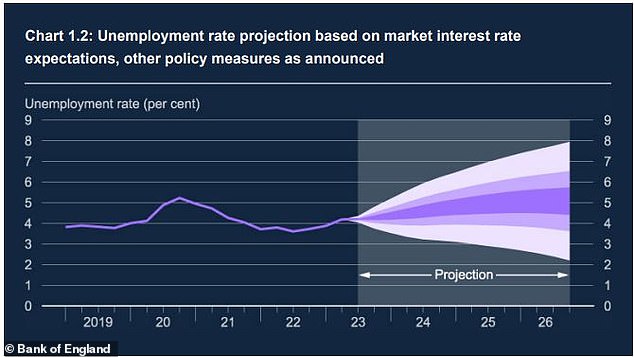
Unemployment is expected to rise further in the coming years
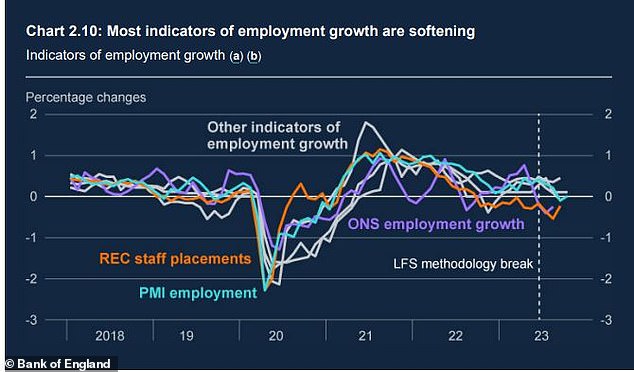
Key indicators point to a weakening labor market
Unemployment
Unemployment is expected to rise steadily over the next three years, reaching above 5 percent by the end of 2026, with the MPC raising unemployment expectations for the second time this year.
Key indicators, such as declining vacancy rates, indicate that the labor market is weakening, but not yet in negative territory.
However, it is worth noting that the Office for National Statistics’ methodology regarding employment has recently faced criticism, particularly in terms of ‘economic inactivity’.
The BoE said: ‘The ONS has published experimental estimates of employment and unemployment which should be interpreted with caution.’
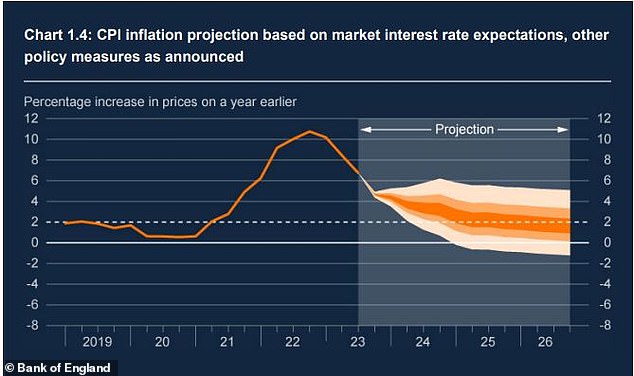
Inflation will remain above the BoE’s 2% target for some time to come
Inflation
While consumer price inflation will fall, it is expected to remain above the BoE’s 2 percent target for some time to come.
According to the current forecast, the CPI is confirmed at 4.75 percent in the fourth quarter of this year, falling to 4.5 and 3.75 percent respectively in the first two quarters of 2024.
According to the BoE, this will be caused by ‘lower inflation in energy, core goods and food prices and, after January, by some decline in services inflation’.
The CPI is not expected to fall back to the target of 2 percent until the end of 2025.
And the BoE warns: ‘The risks to (this) modal inflation projection are tilted to the upside.
‘The second-round effects in domestic prices and wages are expected to take longer to disappear than before they emerged. There are also upside risks to inflation from energy prices, given events in the Middle East.”
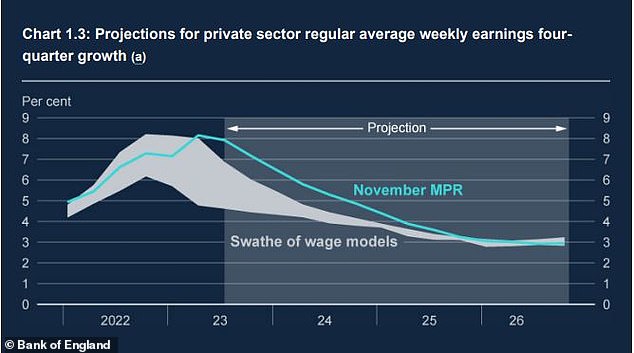
Wage growth is declining
Wage growth
The BoE has been keeping a close eye on wage growth as it worries about the impact the huge wage increases are having on underlying inflation.
Annual average weekly income growth in the private sector was 8 percent in August, but the BoE says a looser labor market and falling inflation are expected to contribute to moderating wage growth.
The BoE said: ‘With the labor market now easing and inflation set to moderate, some of the upward pressure on wage growth should ease in 2024. Wage growth tends to rise as headline inflation and inflation expectations increase.”
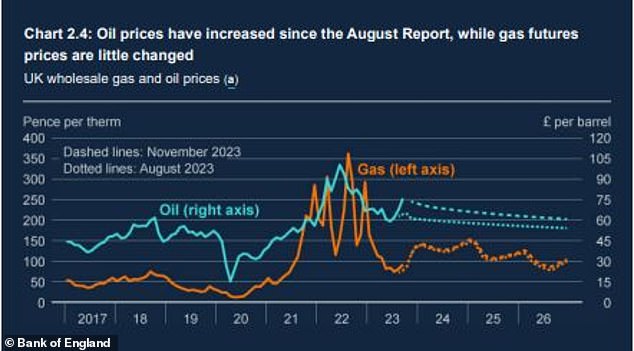
Oil prices are rising while gas futures are higher compared to pre-Covid levels
Oil and gas prices
High oil and gas prices were initially a major driver of the high levels of inflation we have seen since 2021.
Sterling oil prices have risen by 10 percent since the BoE’s August projections, impacting petrol prices and therefore the headline inflation rate.
The BoE said: ‘There remains significant uncertainty around the outlook for wholesale energy prices, including in relation to recent geopolitical developments.
“Although there has been only a relatively limited increase in energy prices to date, uncertainty around future oil prices has increased and the balance of risks around future oil prices has shifted from downward to upward.”
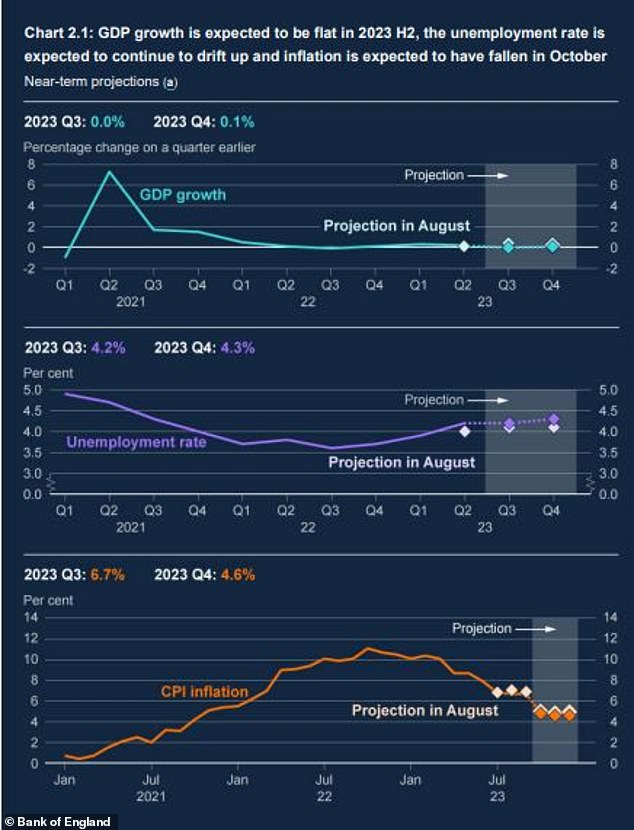
The latest projections from the BoE
Updates from the August report
The above shows the change from the August report when it comes to GDP, unemployment rates and inflation.
Some links in this article may be affiliate links. If you click on it, we may earn a small commission. That helps us fund This Is Money and keep it free to use. We do not write articles to promote products. We do not allow a commercial relationship to compromise our editorial independence.
